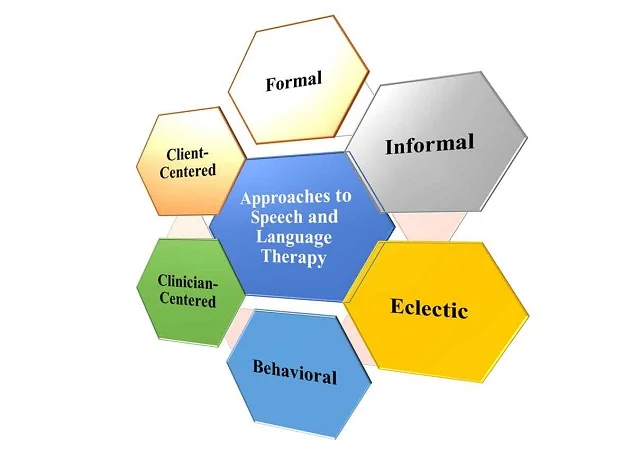Speech therapy continually evolves, embracing innovative approaches to enhance outcomes for individuals with communication disorders. Among these approaches, lateralization has emerged as a promising avenue for optimizing speech and language functions. This article delves deeper into the principles, techniques, benefits, challenges, and future directions of lateralization in modern speech therapy.
Understanding Lateralization
Table Of Contents
Lateralization is a fundamental concept in neuroscience, referring to the specialization of brain functions in the left and right hemispheres. In the context of speech and language, lateralization plays a crucial role, as different aspects of language processing are associated with specific brain regions. While the left hemisphere typically dominates in language production and comprehension for the majority of individuals, the right hemisphere contributes to aspects such as prosody, emotional content, and discourse comprehension.
Principles of Lateralization in Speech Therapy
- Targeted Stimulation: The principle of targeted stimulation lies at the core of lateralization therapy. By selectively stimulating specific brain hemispheres, therapists aim to modulate neural activity in regions associated with speech and language processing, thereby facilitating improvement in communication skills.
- Neuroplasticity: Lateralization speech therapy capitalizes on the brain’s remarkable ability to reorganize and adapt, known as neuroplasticity. Through targeted interventions, therapists seek to harness this plasticity to promote recovery and enhancement of speech functions in individuals with communication disorders.
Techniques Employed in Lateralization
Transcranial Magnetic Stimulation (TMS)
- TMS involves the non-invasive delivery of magnetic pulses to targeted brain regions, modulating neuronal activity.
- In lateralization therapy, TMS can be applied to stimulate specific cortical areas implicated in speech and language processing, promoting functional improvements.
Functional Magnetic Resonance Imaging (fMRI):
- fMRI allows therapists to visualize brain activity in real-time during speech tasks, providing valuable insights into the neural substrates of language processing.
- By identifying areas of dysfunction or atypical lateralization patterns, fMRI guides the development of tailored intervention strategies.
Cognitive-linguistic Exercises:
- Therapists design cognitive-linguistic exercises that engage targeted brain hemispheres, such as language tasks focusing on semantic processing or prosodic modulation.
- These exercises aim to strengthen neural circuits involved in specific aspects of speech and language, promoting functional reorganization and improvement.
Virtual Reality (VR) Therapy
Emerging technologies like virtual reality offer new avenues for lateralization therapy. VR environments can simulate real-life communication scenarios, providing immersive and engaging platforms for speech and language interventions.
Benefits of Lateralization in Speech Therapy
- Customized Treatment: Lateralization therapy offers a personalized approach to speech intervention, tailored to the individual needs and neurophysiological profiles of each client.
- Enhanced Efficacy: By directly targeting brain regions implicated in speech and language processing, lateralization techniques may yield faster and more effective outcomes compared to traditional therapy approaches.
- Insightful Assessment: The integration of neuroimaging techniques like fMRI enables therapists to conduct more precise assessments of language function, guiding the selection of appropriate intervention strategies.
- Holistic Approach: Lateralization therapy recognizes the interconnectedness of cognitive, linguistic, and neural processes involved in speech production and comprehension, fostering a holistic approach to treatment.
- Long-term Benefits: Research suggests that lateralization therapy may not only lead to immediate improvements in speech and language skills but also contribute to long-term neuroplastic changes, enhancing functional outcomes over time.
Challenges and Considerations
- Equipment and Expertise: Implementing lateralization techniques requires access to specialized equipment (e.g., TMS devices, fMRI scanners) and trained professionals proficient in their use.
- Ethical Considerations: Ethical guidelines must be carefully followed when employing invasive techniques like TMS, ensuring patient safety, autonomy, and well-being.
- Cost and Accessibility: The high cost of neuroimaging and stimulation technologies may pose barriers to access for certain individuals or communities, limiting the widespread adoption of lateralization therapy.
- Individual Variability: While lateralization principles provide valuable insights, individual differences in brain anatomy, pathology, and response to stimulation necessitate a tailored approach to therapy.
Future Directions
- Technological Advancements: Ongoing advancements in neuroimaging and stimulation technologies hold promise for making lateralization therapy more accessible and cost-effective.
- Integration of AI: Artificial intelligence algorithms can analyze neuroimaging data to identify patterns and inform personalized intervention plans, enhancing the precision and efficacy of lateralization therapy.
- Interdisciplinary Collaboration: Collaboration between speech therapists, neuroscientists, engineers, and computer scientists can drive innovation in lateralization therapy, fostering interdisciplinary approaches to address complex communication disorders.
- Home-based Interventions: Developments in wearable neuroimaging and stimulation devices may enable home-based lateralization interventions, increasing accessibility and convenience for patients.
Read More About: https://blogtimes.net/
Conclusion
In conclusion, lateralization represents a novel and promising approach in modern speech therapy, leveraging insights from neuroscience to optimize outcomes for individuals with communication disorders. By combining targeted stimulation techniques with advanced neuroimaging modalities and emerging technologies, therapists can develop personalized intervention plans that address the specific neurophysiological underpinnings of each client’s speech difficulties. While challenges exist, ongoing technological advancements and interdisciplinary collaboration hold the potential to further refine and expand the scope of lateralization therapy, ultimately improving the quality of life for individuals with speech and language impairments.
